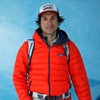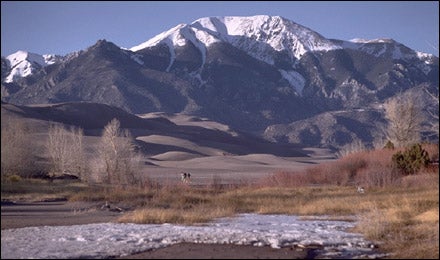BEST: SEPTEMBER┬ľOCTOBER, WHEN THE SAND IS COOL
FIRST ENCOUNTER: Sun Spots
I can’t tell you if we saw the sun set on the North Rim and rise on the South Rim or if the order was reversed. It doesn’t matter. What I remember is that I was seven years old and we’d just watched the daylight disappear over the biggest thing I’d ever seen. Then Mom and Dad drove through the darkness, 215 miles from one side of the Grand Canyon to the other, while my sister and I slept, huddled in our sleeping bags, jockeying for position on the vinyl backseat of our Ford Fairmont station wagon. When my mother shook us awake, we were groggy and moody in the way all kids are when their slumber is interrupted. It was still dark. We sat on a rock ledge, the whole family enveloped in one blanket, and Dad pointed as the sun reappeared in the place we’d once stood. In that moment, I believe…The last thing you expect to see next to 14,000-foot peaks is a 30-square-mile chunk of Sahara-like desert. The unlikely juxtaposition makes Great Sand Dunes National Park and its surrounding 65-square-mile mountain preserve one of the most remarkable spots in the country. The dunes are the main draw┬Śgriddle hot in the summer, they’re cool enough by fall to justify the four-hour drive from Denver or Albuquerque. But the best way to view them is from above. The 4×4-only Medano Pass road accesses the trailhead for the eight-hour round-trip hike to 13,353-foot Mount Herard, which offers an incredible high-alpine view of the dune field. And the easy Sand Ramp Trail, which skirts the eastern edge of the dunes, connects the only creekside backcountry campsites (permits are free but first-come-first-served; ). Afterwards, head 35 miles southwest to Alamosa, where you can rehydrate at the San Luis Valley Brewing Company ().
Southwest ║┌┴¤│ď╣¤═°s: Canyonlands National Park, Utah
FIRST ENCOUNTER: Shadow Puppets
I was supposed to be in center field, proving myself against pro prospects. But here it was spring break, my senior year in high school in San Francisco, and Dad said, Sure, take the Jeep, drive a thousand miles to the desert, have fun. Three boys, a stack of AAA maps, one Playboy, and beef jerky. We gunned it across the Great Basin and rolled into Zion National Park, slapping our palms along slickrock walls and bellowing into every sandstone amphitheater, then tagged Bryce Canyon to gawk at those wiggy red spires. Five days after setting out, we hiked into Capitol Reef, reaching our farthest point from home in a quiet gorge that bent us back toward California and revealed one of Canyon Country’s greatest pleasures: making 100-foot-tall obscene shadow puppets. Soon after, my batting ave…Canyonlands National Park
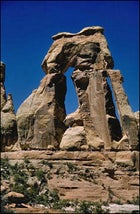 Canyonlands National Park
Canyonlands National ParkBEST: SPRING AND FALL, ON LOW HEAT
Whoever named the Maze District of Canyonlands National Park had a meager imagination. This 30-square-mile puzzle of sandstone canyons, located 46 miles from the nearest paved road, is one of the lower 48’s most inaccessible destinations. Only 4,000 people per year venture here. And that’s the beauty of it: unmitigated solitude. Pack a week’s worth of dehydrated Alpine Aire, park two miles past the Hans Flat Ranger Station, where backcountry permits are available ($15; 435-259-4351), and hike 14 miles to the Maze Overlook. From there, a scramble down the slickrock canyon puts you in the heart of the Maze. The only water comes from
Southwest ║┌┴¤│ď╣¤═°s: Gates of Lodore, Green River, Colorado/Utah
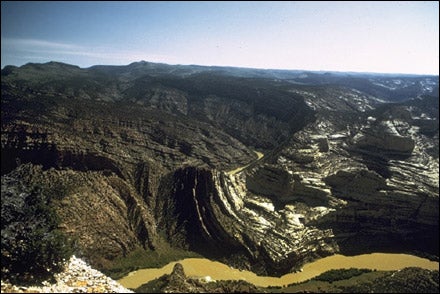
BEST: MAY┬ľJULY: PEAK RUNOFF
In 1869, when John Wesley Powell first viewed the frothy entrance to what is now known as the Gates of Lodore, he freaked out, calling it “a dark portal to a region of doom.” His assessment could not be more misleading. Sure, there are serious rapids (Class III or IV, depending on the water level), but outfitters allow seven-year-olds to raft it. Beginning in western Colorado’s Dinosaur National Monument, this 44-mile section of the Green courses through three spectacular gorges as it winds into Utah (Sheri Griffith Expeditions offers four-day trips from $790; ). First up are the 2,000-foot walls of Lodore Canyon. Then the swirling waters of Whirlpool Canyon, where David Brower and the Sierra Club famously prevented the construction of a dam, before the river tilts again for a rapids-strewn ride through Split Mountain Canyon. Along the way, there are plenty of distractions: bighorn sheep, petroglyphs, pictographs, a billion (literally) years of geological history, and, of course, ButtPlug Falls. (It’s not what you think.)
Southwest ║┌┴¤│ď╣¤═°s: Marfa, Texas
EC trailer
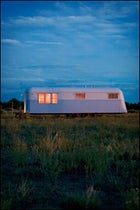 EC trailer
EC trailerBEST: NOW: AVERAGE OCTOBER HIGHS ARE 77 DEGREES
If you’ve heard of Marfa, then you may know about the tiny town’s art scene, its post-millennial real-estate boom, and perhaps even the eerie lights that glow off Highway 90. These are all reasons for buzz, of course, but the town’s most overlooked draw is the surrounding blacktop: hundreds of miles of highways that carve through the Davis and Chisos mountains. For a town of 2,000, Marfa has an embarrassment of great lodging┬Śthe historic Hotel Paisano (doubles, $99; ), the midcentury-modern Thun┬şder┬şbird Hotel (doubles, $130; ), and now El Cosmico, a collection of gussied-up vintage trailers opening this month (doubles, $75; ). Cyclists can head north from town toward Fort Davis, where a left turn onto Highway 118 takes you climbing to the giant telescopes of the world-renowned McDonald Observatory┬Śan 80-mile round-trip. Road-trippers should drive in the other direction, down to the border crossing in Presidio, and then along the Rio Grande via Ranch Road 170, where trailheads for Rancherias and Closed canyons await and Mexico is never more than a short swim away.
Southwest ║┌┴¤│ď╣¤═°s: Sedona, Arizona
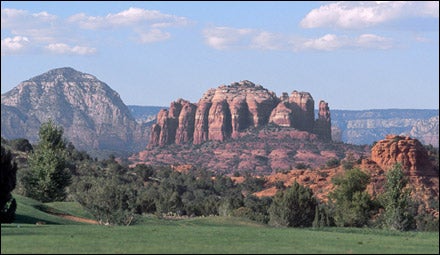
BEST: SEPTEMBER┬ľOCTOBER: COOL TEMPS, NO CHICAGO SPRING-BREAKERS
Ninety minutes north and a world away from Phoenix, Sedona has a reputation for crystals, pink Jeeps, and more curio shops per acre than Disney World. Maybe that’s why so few people realize it’s a hell of a place to ride a mountain bike, with mile upon mile of juniper-and-manzanita hills, the chalky red singletrack rolling into smooth rock shelves with constant changeability. Unlike Telluride’s brutal vertical or Moab’s endless slickrock, Sedona’s spectacular trails are all right out your back door. “It’s like being a skier and living right at the base of the mountain,” says 30-year resident Mike Bower, an architect who’s been working on the path network since the eighties. Because so many trails switch quickly from gentle rollers to technical descents, beginners might not love it. What never changes is the awesomeness of the red-rock formations, making the riding great from winter (when snow might pile up on the evergreens and melt by noon) through summer (when dip-worthy Oak Creek is never far away). Temperate spring and fall are that much better. Base yourself at Sedona Rouge Hotel and Spa, a slick Andalusian-themed resort in West Sedona (doubles from $199; ), and rent a ride from Absolute Bikes, in the Village of Oak Creek (from $80 for two days; ). From their back door you’ll immediately wheel out under the shadow of Bell Rock, one of Sedona’s five major vortexes┬Śor, if you prefer, a damn gorgeous hunk of rock.
Southwest ║┌┴¤│ď╣¤═°s: The Enchanted Circle, New Mexico
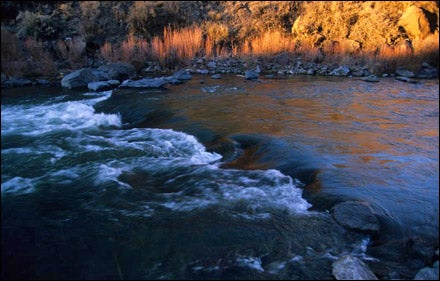
Strange Love
Best Atomic-Bomb Test Site: Trinity Site Zero, White Sands Missile Range, New Mexico
Best Rattlesnake Museum: The American International Rattlesnake Museum, Albuquerque, New Mexico
Best Rowdy Bar in a Mormon Town: The Other End Bar and Grill, Heber City, Utah
Best Eiffel Tower Replica: The one with the cowboy hat in Paris, Texas
Best Store Hawking Remnants of the Manhattan Project: The Black Hole, Los Alamos, New Mexico
BEST: SEPTEMBER┬ľOCTOBER: GOLDEN ASPENS, GREEN CHILE
Rolling meadows, pine-and-aspen forests, and funky mining towns make this loop around 13,161-foot Wheeler Peak our favorite drive in New Mexico. The route starts in Taos and heads north through Carson National Forest for 24 miles before hitting the town of Questa. Look right and you’ll see Wheeler’s overhanging face. About a mile into town, Highway 38 forks right, splicing the Sangre de Cristo Mountains and climbing up to the Old West┬ľmeets┬ľAlpenhaus ski town of Red River (elevation 8,750). Continue for 18 miles alongside the river and meadows full of grazing horses. Just before hitting Eagle Nest Lake, turn right on Route 64, which loops back to Taos and the chicken-and-green-chile enchiladas at the Guadalajara Grill (575-751-0063). A worthy detour: Bypass the Route 38 turnoff in Questa and head three miles north until you see signs for Route 378 and Wild Rivers Recreation Area. This road ends at the confluence of the Rio Grande and Red River gorges, surreal 800-foot gouges in the earth.
Southwest ║┌┴¤│ď╣¤═°s: Needles Range, Colorado
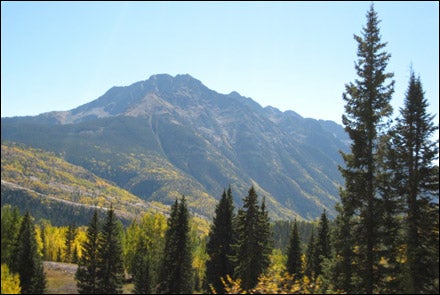
BEST: JUNE┬ľAUGUST, BEFORE FIRST SNOW
Don’t let the whistle stop at Needleton fool you. There’s no town. The Needles Range, in a remote corner of the San Juan Mountains, is most easily accessed via the narrow-gauge tourist train between Durango and Silverton. Pick up a map from the Backcountry Experience (), in Durango, and pack plenty of food. Once the train leaves, you’re on your own. Head east, cross the Animas River at the unnamed bridge, and hike seven miles up trout-filled Needle Creek to Chicago Basin, at 11,000 feet. Camping is permitted anywhere except on the shores of Twin Lakes. Pitch your tent in full view of the basin’s three fourteeners┬ŚEolus, Sunlight, and Windom (no permits required). Each can be climbed in a day without ropes, but the San Juans are notorious for unstable talus. You’d be forgiven for just admiring the peaks’ beauty from below. Arrange your shuttle through the Durango┬ľSilverton Railroad ($79; ).



